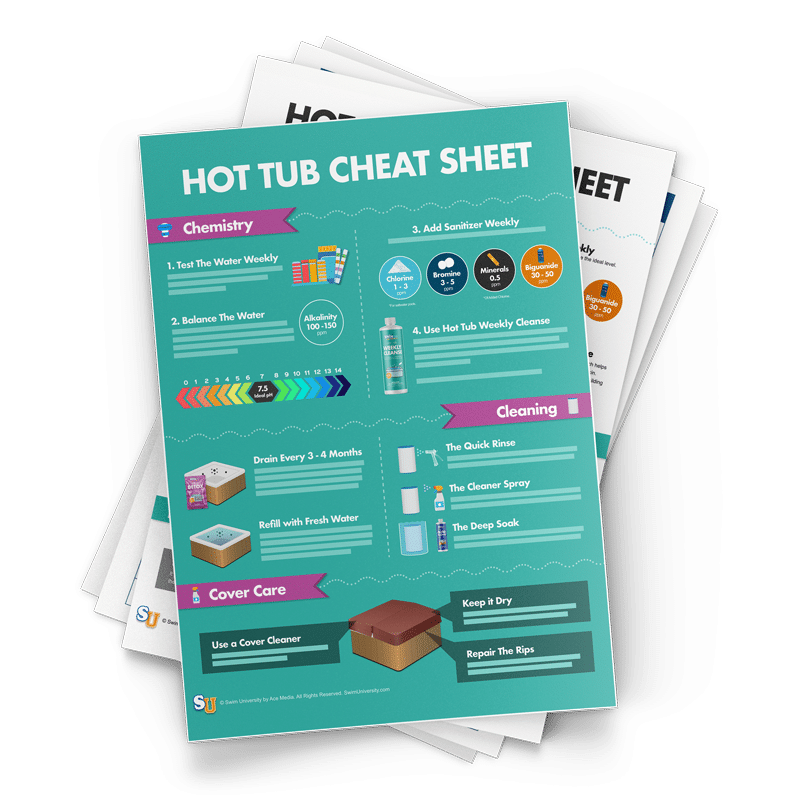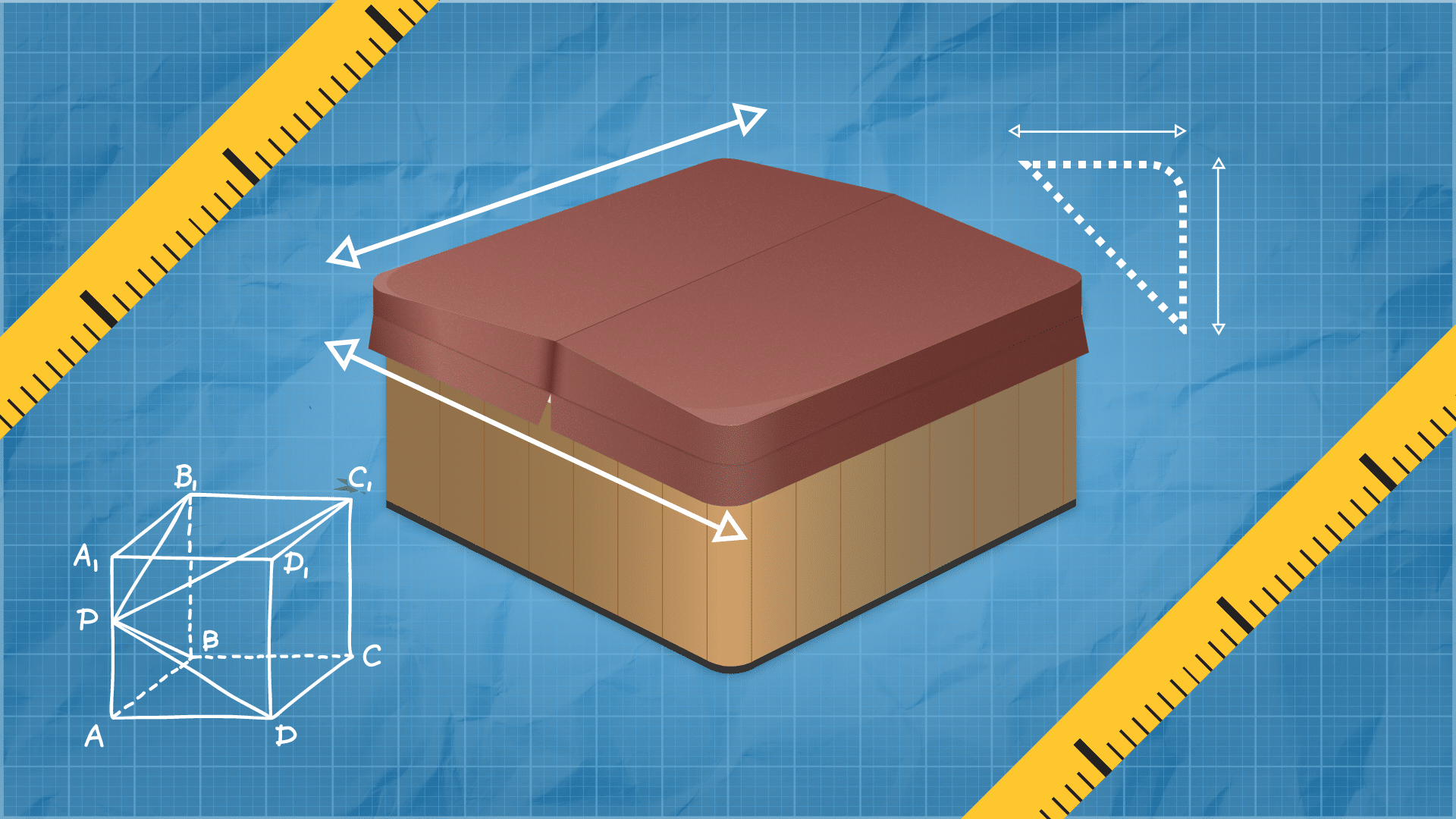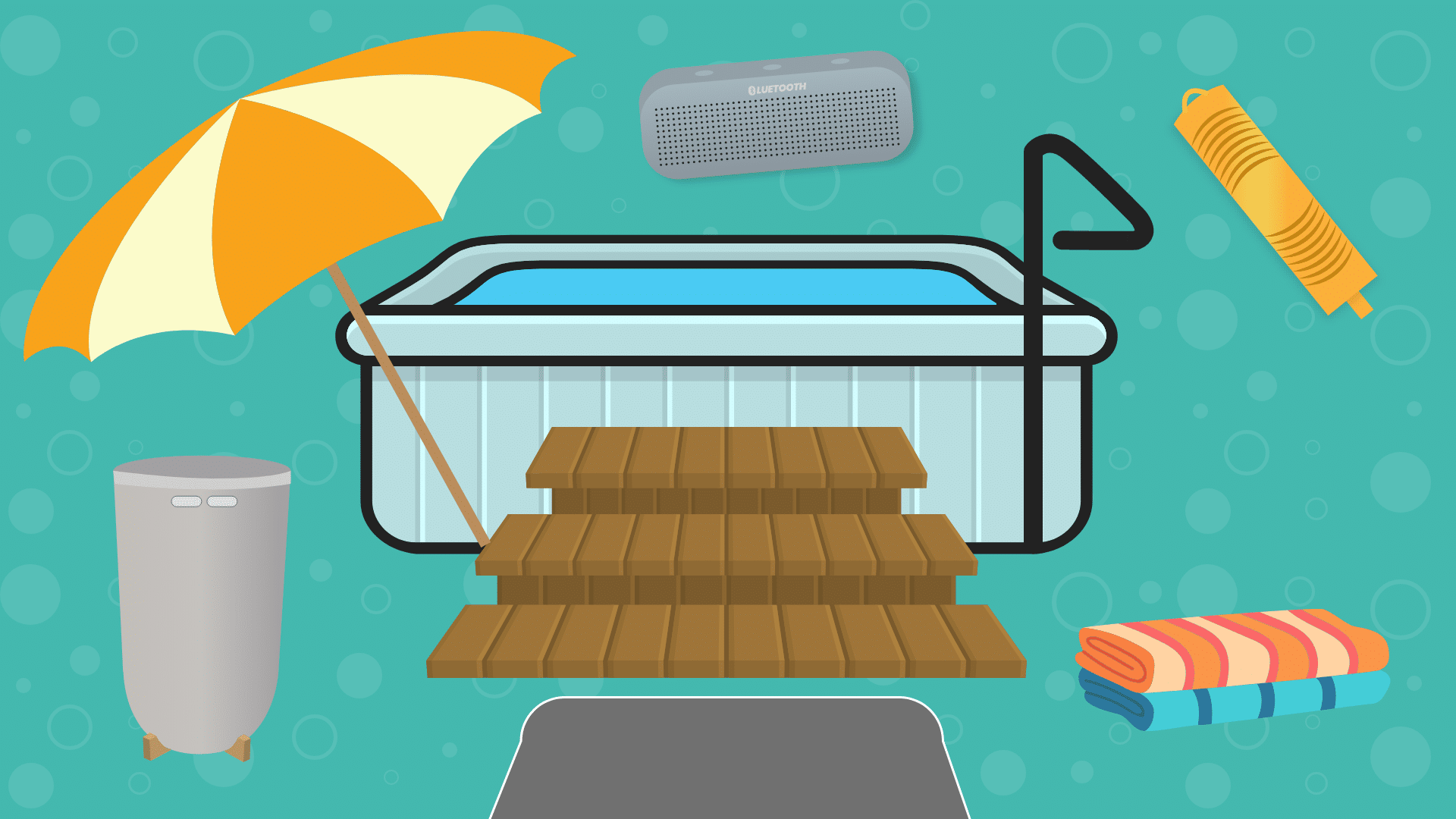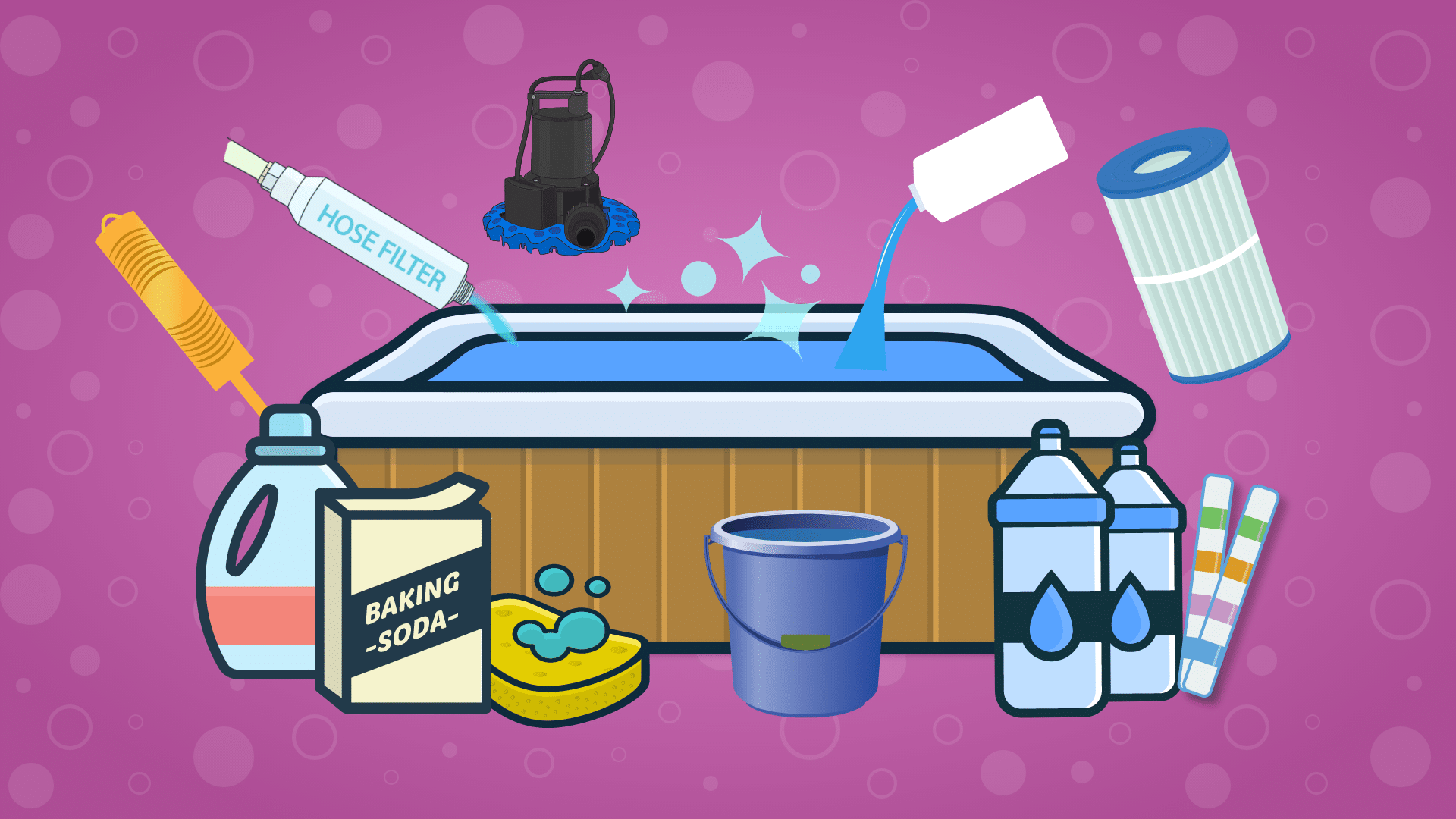Hot Tub Ozonators: Do They Work and Are They Worth It?
Wondering if a hot tub ozonator is right for you? An ozonator helps you drastically reduce the amount of chemicals in your hot tub, while still keeping your water sanitized and free of contaminants. But there are some downsides, like the cost and hassle of installation and potential damage to your hot tub cover. So here’s everything you need to know about hot tub ozonators. Watch the video below or keep reading for a quick overview.
Learn how to keep your hot tub clear while saving money so you can enjoy more soaking time without big costs. The Hot Tub Handbook covers every type of hot tub on earth.
How Does a Hot Tub Ozonator Work?
A hot tub ozonator, or ozone generator, creates and injects ozone gas (O3) into your hot tub water. Ozone is a disinfectant that kills bacteria and contaminants in the water through a process called oxidation.
Ozonators are compatible with almost any type of hot tub system. It’s usually added inside the spa cabinet and attached to a dedicated hose that leads to your hot tub jets. As ozone is added to the water through the jets, it breaks down contaminants like bacteria, lotion, shampoo, and body oil. And because the ozone doing most of the work to sanitize your water, you’ll need a lot less chlorine or bromine in your hot tub.
Ozonators also break up chlorine and bromine molecules that have bonded to contaminants (a.k.a. combined chlorine and combined bromine). That means you won’t have to shock your hot tub as often, since the ozone frees up your sanitizers and allows them to be reused continuously.
The downside to ozone’s reactivity? It can damage the vinyl interior of your hot tub cover. You’ll want to add a hot tub thermal blanket to protect your cover and help reduce heat loss and evaporation. Finally, many hot tub ozonators only last 3 to 5 years and they can require bulb replacements during that time.
Compatible with almost any hot tub, this ozonator uses a corona discharge (CD) to kill up to 99% of bacteria, germs, and contaminants. Ozonators will help lower your chemical usage by up to 90%. And a CD ozonator works more efficiently and lasts longer than most UV ozone systems.
How Much Sanitizer Do I Need With a Hot Tub Ozonator?
You don’t need to use as much chlorine or bromine with an ozonator, but you still need some sanitizer in the water. With a hot tub ozonator, your chlorine levels should be at 0.5 PPM (compared to the typical 1-3 PPM) and your bromine levels at 1.0 PPM (compared to the typical 3-5 PPM).
Because ozone breaks up the chlorine and bromine molecules that have bonded to contaminants, you’ll have more free and available sanitizer in the water. And that means your levels can stay lower. Be sure to test your water regularly to help maintain the right chlorine and bromine levels.
Types of Hot Tub Ozonators
There are two types of hot tub ozonators: Corona Discharge (CD) ozonators and Ultraviolet (UV) ozonators.
Corona Discharge Ozonators
Corona discharge, or CD ozonators, use much newer technology than ultraviolet (UV) ozonators and are much more common now. The “corona” (which means crown or halo) is a sheet of plasma created when a conductor is ionized by electricity. This plasma curtain splits oxygen molecules to create ozone (O3).
Compatible with almost any hot tub, this ozonator uses a corona discharge (CD) to kill up to 99% of bacteria, germs, and contaminants. Ozonators will help lower your chemical usage by up to 90%. And a CD ozonator works more efficiently and lasts longer than most UV ozone systems.
CD ozonators have a long working life, high efficiency, and lower costs than UV ozonators. They can also handle much larger volumes of water, despite being generally smaller. And unlike UV ozonators, they don’t have cartridges, chips, or bulbs to replace, and their plate ionizers can last as long as ten years.
But high humidity hampers the generator’s ability to function. So if you live in an area with very high humidity (60% or higher), a CD unit might not be the best option for you.
Ultraviolet Ozonators
UV ozonators use ultraviolet light to split oxygen molecules into free oxygen atoms. These atoms recombine with ambient oxygen to create ozone (O3).
They’re not as powerful as CD ozonators, have a shorter functional life, and may cost more to run if you’ve got a large hot tub. Also, their bulbs suffer from reduced UV output over time, and they have to be replaced every two to three years to regain their ozone-making power.
On the plus side, UV systems aren’t affected by ambient humidity and will produce ozone in any climate.
Can I Install an Ozonator in my Hot Tub?
Many newer hot tubs are sold as “ozonator ready,” which means they already have a hook-up for the unit of your choice. Ozone-ready hot tubs usually have a small ozone jet near the bottom of the tub. This jet will have a water port and an air (ozone) port. When no ozonator is present, the jet acts as a water jet only.
You’ll often find a capped, clear, ¼” interior diameter (ID) air suction tube hanging in the equipment bay of your spa if it doesn’t already have an ozonator.
To get your hot tub ready for your ozonator:
- Verify that your hot tub will accept an ozonator by consulting your owner’s manual. If there is room and a power hook-up for your device, you’re good to go.
- Determine the proper voltage (120v or 240v).
- Check your electrical system to make sure your timer works properly and your entire hardware system is protected by a ground-fault circuit interrupter (GFCI).
- Find and repair any leaks in your spa plumbing.
- Check the filters, and clean them if necessary.
- Drain your hot tub and fill it with fresh water to give your ozonator a clean start.
- Balance and sanitize your hot tub water. Remember: ozone reduces the amount of chemicals needed and improves water quality, but it won’t replace your sanitizer.
- Verify the plug type you will need to connect the ozonator to your hot tub’s control pack.
How to Install a Hot Tub Ozonator
While installing an ozonator is relatively straightforward, hire a professional if you’re uncomfortable installing hardware or handling electrical or plumbing components.
1. Mount the Ozonator
You’ll be mounting your ozonator inside your spa cabinet or near the hot tub, depending upon your tub and your setup. Mount the device firmly, and make sure it has plenty of room for airflow.
2. Install and Connect the Check Valve
If your hot tub has an ozonator jet, connect it to your unit. If not, you may need to do a bit of plumbing. Consult your hot tub manual (or hire a professional) before you proceed.
Locate the ozone suction connection. This is typically ¼″ inner diameter (ID) × ⅜″ outer diameter (OD) vinyl air tubing. If the tubing has a cap, you can snip it off to accommodate the one-way check valve included in the ozonator kit
Note: The check valve is designed to prevent water backflow from ruining your ozonator. After you connect your ozonator to your hot tub, cut the tubing at around six inches, and install the check valve. Remember, you want air to be able to travel from the unit to the spa, but water needs to be stopped before it reaches the ozonator.
Attach the ozone check valve to one end of the vinyl tubing supplied with your ozonator kit. Attach the check valve’s other end to the hot tub’s suction tubing.
Set the air (ozone) to flow away from the ozonator and toward the hot tub. The valve may have a directional indicator for easy setup. If it doesn’t, determine the flow direction by blowing into one end of the valve. Be extra careful with this step, as installing the check valve backward will keep your ozonator from working properly.
3. Create a Hartford Loop
Your check valve is the first line of defense against backflow destroying your ozonator. But you can add another layer of protection by arranging your ozone tubing into a special fault-protection configuration known as a Hartford Loop.
Originally designed to protect steam boilers from failing if a line ruptured, the Hartford Loop protects your ozonator by keeping water from flowing into it.
Create a Hartford Loop by looping the ozone tubing up as high as you can before you connect it to the ozonator. Make sure the loop of tubing is above the water line, and it will help prevent water from reaching your ozonator in the event of a line failure or other problems.
4. Plug in or Hardwire the Ozonator
You can either plug the ozonator into a wall outlet for maximum convenience or hardwire it to your system so it turns on and off when you power on the main breaker for your hot tub.
Important: Again, if you don’t feel comfortable performing electrical work, be sure to consult or hire an electrician if you want to hardwire your system.
5. Set the Timers
With your system installed, set the timers on your ozonator and hot tub so the system turns on and off automatically/ For peak performance and efficiency, you may have to experiment with the run times of your ozonator based on your water quality and bather load. Start with four hours and increase it as needed.
Hot Tub Ozonator Maintenance
Regular ozonator maintenance is easy. Ensure it’s making ozone, the ozone is reaching the hot tub, and your check valve is holding down the fort.
1. Test Your Ozone Levels
As your ozonator runs, test your hot tub water regularly with ozone test strips or a meter. You’ll get an instant snapshot of the ozone in your water, and whether or not you need to adjust (or replace) your hardware or boost your run time accordingly.
2. Check the Ozone Injector
A faulty ozone injector can prevent it from reaching your hot tub water, no matter how much ozone your unit’s generating. If you find your water has low ozone levels, check your ozone injector before you replace the whole system.
3. Inspect the Check Valve
Keeping water out of the ozonator is essential, and your check valve is a key part of preventing backflow from ruining your day. If this valve begins to leak or fails completely, your hot tub could quickly destroy your ozonator. Inspect your check valve as part of your regular part of your hot tub maintenance so you can stop a leak before it starts.
Is a Hot Tub Ozonator Worth It?
Ozonators help you use fewer hot tub chemicals, like chlorine, bromine, or shock. And fewer chemicals mean a better soaking experience, especially for bathers with sensitive skin.
But the cost of installation and the replacement can outweigh any money you’ll save on chemicals. And the ozonator needs to be installed properly, usually by a professional, to ensure it’s working properly. Finally, Ozonators can damage the vinyl interior of hot tub covers so you’ll need a hot tub thermal blanket.
Frequently Asked Questions about Hot Tub Ozonators
Still have more questions about whether a hot tub ozonator is worth it? Here are some common questions and answers.
How Often Do You Need to Replace a Hot Tub Ozonator?
This depends on what type of ozonator you have (ultraviolet light vs. corona discharge). Most UV ozonators last between three and five years before they need replacing. But you might need to change out the solarized bulb before then. On the otherhand, a CD ozonator and its plates can last for a decade. Just be sure to keep it clean and only run in low humidity for optimal performance.
Use ozone test strips or check your unit’s indicator light to determine if it’s time for a new part or a whole new unit.
Which is Better for a Hot Tub: Salt Water Systems or Ozonators?
Both ozonators and salt water systems help you buy and add fewer chemicals to your hot tub. And both systems require the installation of electric and plumbing components. But ozone requires significantly lower levels of chlorine or bromine in your water.
Salt water generators use salt to produce chlorine, which sanitizes your hot tub water. But your chlorine levels will be around 3 PPM in a salt water hot tub, whereas your chlorine levels are only 0.5 with a hot tub ozonator. That’s because an ozonator directly sanitizes the hot tub water without you needing to add anything. However, because ozone is so powerful, it can damage the vinyl on your hot tub cover. Check out our guide to salt water hot tubs for more details.
How Much Should You Run Your Ozonator?
Depending on how much you use your hot tub, you’ll need to run your ozonator for at least four to six hours a day, but running it 24/7 will maximize sanitation. For best results, turn it on and leave it running, especially if you use your hot tub on a regular basis.
Do You Need Chemicals with an Ozonator?
You’ll still need to add some chemicals when using a hot tub ozonator, but a lot less than normal. Your chlorine needs to be at 0.5 PPM (compared to the typical 1-3 PPM) and your bromine at 1.0 PPM (compared to the typical 3-5 PPM). You’ll also still need to balance your alkalinity and pH levels with the right chemicals.
3 Ways We Can Help With Your Hot Tub
- Hot Tub Cheat Sheets (Free): Easy-to-use guides to help you keep your hot tub water balanced and sanitized.
- The Hot Tub Handbook: An illustrated guide to DIY hot tub care, including water chemistry, maintenance, troubleshooting, and more.
- The Hot Tub Care Course. You’ll get step-by-step videos and a step-by-step downloadable guide with everything you need to know about hot tub maintenance.











